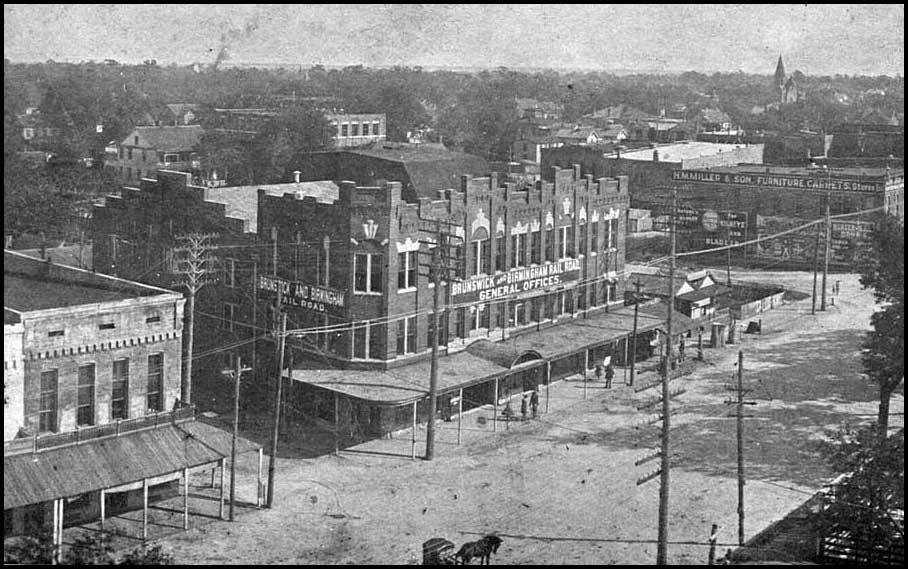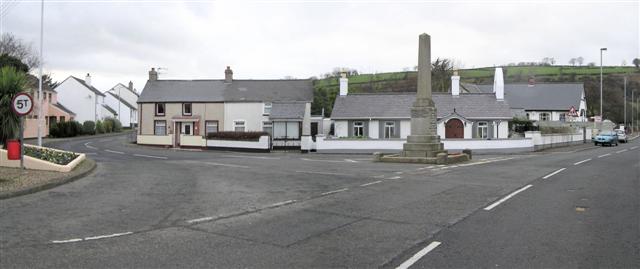|
History Of Brunswick
The recorded History of Brunswick, Georgia dates to 1738, when a plantation was established along the Turtle River. By 1789, the city was recognized by President George Washington as having been one of five original ports of entry for the American colonies. In 1797, Brunswick's prominence was further recognized when it became the county seat of Glynn County, a status it retains to this day. During the later stages of the Civil War, with the approach of the Union Army, much of the city was abandoned and burned. Economic prosperity eventually returned, when a large lumber mill was constructed in the area. By the late 19th-century, despite yellow fever epidemics and occasional hurricanes, business in Brunswick was thriving, due to port business for cotton, lumber, naval stores, and oysters. During this period, Brunswick also enjoyed a tourist trade, stimulated by nearby Jekyll Island, which had become a posh, exclusive getaway for some of the era's most influential people. World War ... [...More Info...] [...Related Items...] OR: [Wikipedia] [Google] [Baidu] |
Louisville, Georgia
Louisville is a city in and the county seat of Jefferson County, Georgia, United States, and also a former state capital of Georgia. It is located southwest of Augusta on the Ogeechee River, and its population was 2,493 at the 2010 census, down from 2,712 at the 2000 census. Its name is pronounced "Lewis-ville", though it and the differently pronounced city in Kentucky were both named for Louis XVI. History Louisville was incorporated on January 26, 1786, as the prospective state capital, though it did not become so for a decade. Savannah had served as the colonial capital, but was considered too far from the center of population in the growing state, and Augusta became the state capital in the 1780s. Louisville was named for Louis XVI, who had aided the Continentals during the American Revolutionary War and was still the King of France when the decision to incorporate the city was made. Development of the city took years, and its state government buildings were complete ... [...More Info...] [...Related Items...] OR: [Wikipedia] [Google] [Baidu] |
Union (American Civil War)
During the American Civil War, the Union, also known as the North, referred to the United States led by President Abraham Lincoln. It was opposed by the secessionist Confederate States of America (CSA), informally called "the Confederacy" or "the South". The Union is named after its declared goal of preserving the United States as a constitutional union. "Union" is used in the U.S. Constitution to refer to the founding formation of the people, and to the states in union. In the context of the Civil War, it has also often been used as a synonym for "the northern states loyal to the United States government;" in this meaning, the Union consisted of 20 free states and five border states. The Union Army was a new formation comprising mostly state units, together with units from the regular U.S. Army. The border states were essential as a supply base for the Union invasion of the Confederacy, and Lincoln realized he could not win the war without control of them, especially Maryla ... [...More Info...] [...Related Items...] OR: [Wikipedia] [Google] [Baidu] |
Confederate States Army
The Confederate States Army, also called the Confederate Army or the Southern Army, was the military land force of the Confederate States of America (commonly referred to as the Confederacy) during the American Civil War (1861–1865), fighting against the United States forces to win the independence of the Southern states and uphold the institution of slavery. On February 28, 1861, the Provisional Confederate Congress established a provisional volunteer army and gave control over military operations and authority for mustering state forces and volunteers to the newly chosen Confederate president, Jefferson Davis. Davis was a graduate of the U.S. Military Academy, and colonel of a volunteer regiment during the Mexican–American War. He had also been a United States senator from Mississippi and U.S. Secretary of War under President Franklin Pierce. On March 1, 1861, on behalf of the Confederate government, Davis assumed control of the military situation at Charleston, South C ... [...More Info...] [...Related Items...] OR: [Wikipedia] [Google] [Baidu] |
American Civil War
The American Civil War (April 12, 1861 – May 26, 1865; also known by other names) was a civil war in the United States. It was fought between the Union ("the North") and the Confederacy ("the South"), the latter formed by states that had seceded. The central cause of the war was the dispute over whether slavery would be permitted to expand into the western territories, leading to more slave states, or be prevented from doing so, which was widely believed would place slavery on a course of ultimate extinction. Decades of political controversy over slavery were brought to a head by the victory in the 1860 U.S. presidential election of Abraham Lincoln, who opposed slavery's expansion into the west. An initial seven southern slave states responded to Lincoln's victory by seceding from the United States and, in 1861, forming the Confederacy. The Confederacy seized U.S. forts and other federal assets within their borders. Led by Confederate President Jefferson Davis, ... [...More Info...] [...Related Items...] OR: [Wikipedia] [Google] [Baidu] |
Glynn County In 1864
Glynn () is a small village and civil parish in the Mid and East Antrim Borough Council area of County Antrim, Northern Ireland. It lies a short distance south of Larne, on the shore of Larne Lough. Glynn had a population of 2,027 people in the 2011 Census. History St. Patrick is said to have built the Church of Gluaire around 435 A.D. Within the town limits, the remnants of a historic stone church can still be found. The county of Antrim was once divided into the districts of North Clandeboye and Glynns (Glynnes). The region was a vicarage in the Diocese of Connor and the ecclesiastical province of Armagh, and it was a gift from Marquess of Donegall. The village is then mentioned in a grant from King James I to Arthur Lord Chichester, Baron of Belfast, of his estates in Antrim, Down and Carrickfergus. This grant was dated 20 November 1620. In a later grant from King Charles II to Edward, Viscount Chichester, Glynn was mentioned as being part of the territory of Magheram ... [...More Info...] [...Related Items...] OR: [Wikipedia] [Google] [Baidu] |
Timber
Lumber is wood that has been processed into dimensional lumber, including beams and planks or boards, a stage in the process of wood production. Lumber is mainly used for construction framing, as well as finishing (floors, wall panels, window frames). Lumber has many uses beyond home building. Lumber is sometimes referred to as timber as an archaic term and still in England, while in most parts of the world (especially the United States and Canada) the term timber refers specifically to unprocessed wood fiber, such as cut logs or standing trees that have yet to be cut. Lumber may be supplied either rough- sawn, or surfaced on one or more of its faces. Beside pulpwood, ''rough lumber'' is the raw material for furniture-making, and manufacture of other items requiring cutting and shaping. It is available in many species, including hardwoods and softwoods, such as white pine and red pine, because of their low cost. ''Finished lumber'' is supplied in standard sizes, mostly ... [...More Info...] [...Related Items...] OR: [Wikipedia] [Google] [Baidu] |
Cotton
Cotton is a soft, fluffy staple fiber that grows in a boll, or protective case, around the seeds of the cotton plants of the genus ''Gossypium'' in the mallow family Malvaceae. The fiber is almost pure cellulose, and can contain minor percentages of waxes, fats, pectins, and water. Under natural conditions, the cotton bolls will increase the dispersal of the seeds. The plant is a shrub native to tropical and subtropical regions around the world, including the Americas, Africa, Egypt and India. The greatest diversity of wild cotton species is found in Mexico, followed by Australia and Africa. Cotton was independently domesticated in the Old and New Worlds. The fiber is most often spun into yarn or thread and used to make a soft, breathable, and durable textile. The use of cotton for fabric is known to date to prehistoric times; fragments of cotton fabric dated to the fifth millennium BC have been found in the Indus Valley civilization, as well as fabric remnants dated back ... [...More Info...] [...Related Items...] OR: [Wikipedia] [Google] [Baidu] |
Altamaha River
The Altamaha River is a major river in the U.S. state of Georgia. It flows generally eastward for 137 miles (220 km) from its origin at the confluence of the Oconee River and Ocmulgee River towards the Atlantic Ocean, where it empties into the ocean near Brunswick, Georgia. No dams are directly on the Altamaha, though some are on the Oconee and the Ocmulgee. Including its tributaries, the Altamaha River's drainage basin is about in size, qualifying it among the larger river basins of the US Atlantic coast.The Altamaha River Course [...More Info...] [...Related Items...] OR: [Wikipedia] [Google] [Baidu] |
Brunswick And Florida Railroad
The Brunswick and Western Railroad (known earlier as the Brunswick and Florida Railroad and the Brunswick and Albany Railroad) is a historic railroad in southern Georgia that at its greatest extent ran from Brunswick near the coast to Albany. Segments of the line still exist today. The Brunswick and Florida Railroad ran from Brunswick west to Glenmore (located about 10 miles west of present-day Waycross), where it would connect with the Atlantic and Gulf Railroad. History In the 1830s, a railroad route from North Florida through South Georgia and onwards to the Atlantic coast was the goal of several different competing companies. The route was desired due to the growth of cotton production in the area and the lack of navigable rivers through the area. The head of navigation on the Flint River was at Albany, Georgia, the center of cotton trade in the region; however, the Flint River was relatively small and Apalachicola Bay lacked a decent harbor. There were two major port ... [...More Info...] [...Related Items...] OR: [Wikipedia] [Google] [Baidu] |




